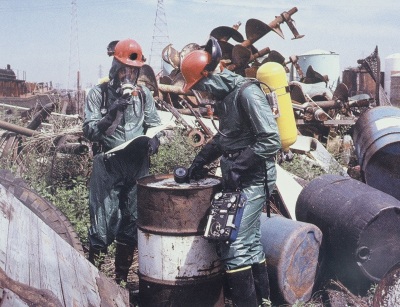Phase II Contaminant Investigations
a.k.a. Phase II Environmental Site Assessment
A Phase II Contaminant Investigation is also known as a Phase II Environmental Site Assessment and can be defined as the investigation of real property through physical samplings and analyses to determine the presence, nature and extent of contamination and if present, a description of the recommended remedial method. In the event that contamination is suspected or found, OGI Environmental’s staff is technically trained and experienced to conduct the necessary Phase II contaminant investigation or site characterization, which is usually proposed to deal with soil and/or groundwater contamination.
OGI uses investigative techniques including: soil borings, hand augering, test pits, temporary or permanent monitoring wells, soil and groundwater sampling, directional drilling, soil gas surveys, geophysical methods, pump tests, groundwater modeling and other methods, to ensure that characterization is thorough. The information developed from the investigation is used to evaluate additional investigative requirements and/or the feasibility of various cleanup alternatives using factors which include cost, effectiveness, duration, and health risk. OGI Environmental’s staff is technically trained and experienced.
Get an Estimate With No Obligation
Phase II Contaminant Investigation
A Phase II contaminant investigation may be implemented as a result of Recognized Environmental Conditions (RECs) listed in a Phase I Environmental Site Assessment or the investigation may start with the “Phase II” if the RECs have previously been identified or if all of the risks at the site are already known. If contamination is found at significant levels or at concentrations that exceed federal, state or human-health risk guidelines, further characterization would be required to fully delineate the vertical and lateral extent of the contaminant plume. During this stage of the assessment, it may become necessary to notify authorities if there has been an exceedance of regulatory standards or if there is a perceived risk to life, health or the environment. OGI employs experienced professionals who coordinate and work with authorities on a daily basis to expedite regulatory closure of impacted properties and to obtain a “No Further Action” letter for the site.

Properties that have current or previous environmentally sensitive uses are often the subject of Phase II contaminant investigations. These properties include: gas stations, dry cleaners (on-site plant), truck stops, machine shops, automotive repair and maintenance facilities, manufacturing plants, hazardous waste storage and others. Examples of the types of Recognized Environmental Conditions that would warrant a Phase II include: underground or aboveground fuel storage tanks, underground or aboveground chemical/waste storage tanks, 55-gallon drums containing chemicals/waste, in-ground hydraulic lifts, oil/water separators, floor drains, septic tanks/leachfields (in an industrial setting), solvent usage (including dry cleaning solvent), etc.
OGI’s extensive investigation experience and understanding of Federal, State and Local regulations has resulted in the closure of serveral sites in the Southern Nevada area without requiring active remediation, ultimately saving our clients hundreds of thousands of dollars.
Laboratory Results
OGI has relationships with a number of local and national laboratories to assist us with the laboratory testing required to complete the Phase II testing. These long-term relationships have resulted in competitive pricing and expedited laboratory turnaround times when needed. Following a Phase II contaminant investigation, laboratory analytical results from soil, groundwater and/or soil vapors may indicate a level of contamination significant enough to require cleanup or remediation. In this case, continued coordination with regulatory officials is mandated and the remediation is ongoing until the cleanup is completed by reaching the applicable cleanup standards or regulatory closure has been achieved by means of a risk assessment or other accepted method. Although not as common, a Phase II contaminant investigation can involve sampling and investigation of materials other than soil and groundwater. These would include sampling for sediments, liquids (PCBs in transformers, chemicals in drums, surface water), solids (asbestos, lead-based paint, mold) and gases.

